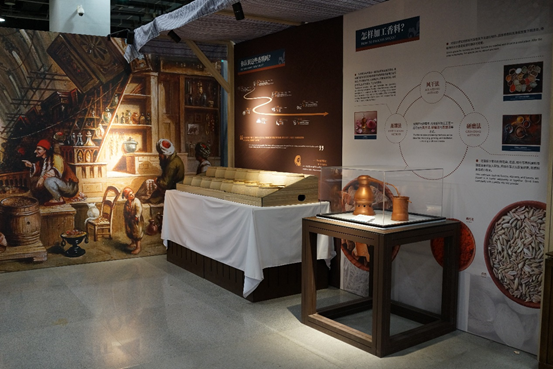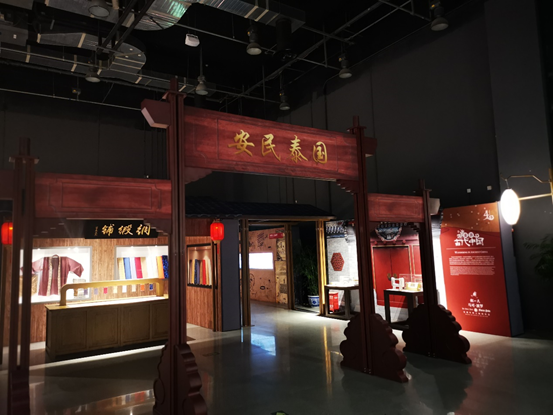Physical exhibition: The Glory of China
Introduction to the Exhibition “Be Marco Polo for a Day: Discovering the Wisdom along the Silk Road”
Update time :2021-06-11
Content:
This exhibition presents the scientific and technological civilization of ancient China through cultural relic reproductions, models, objects, pictures and texts. This exhibition features nearly two hundred exhibits, and the area of exhibition venue is 800-1500 m2.
I. About
The exhibition “Be Marco Polo for a Day: Discovering the Wisdom along the Silk Road” is a first-person perspective exhibition that allows visitors to experience in person the ancient technology and civilizations that flourished along the Silk Road, and thus appreciate the important role of the Silk Road in promoting technology and linking human cultures.
The exhibition features a variety of interactive exhibits, models, replicas of cultural relics, multimedia, graphic panels, online guides/games, craft workshops, thematic educational activities, and creative products.
Exhibition area: 2000 sqm / 1200 sqm
Number of exhibits: 88 pieces (sets)
Nature of exhibition: Short-term thematic roving exhibition for home and abroad.
The exhibition is divided into six sub-themes as follows.
1. The imagination of foreign lands. By showing how civilizations from the East and West, at both ends of the Silk Road, imagined foreign lands, the audience is prompted to consider the meaning and role of the Silk Road. Through the image of Marco Polo, an ancient merchant, the audience is guided to examine the products, knowledge and exchanges on the dynamic map of the Silk Road from Marco Polo’s perspective.
2. What goods to take to China. Visitors take on the identity of ancient Silk Road merchants who travelled around European and West Asian bazaars to learn about unique local commodities, as well as how they are processed and used. This exhibition focuses on knowledge of the fruits, gems, glass, herbs and spices of the Western Regions. It is interspersed with knowledge of the mathematics used in the ancient Silk Road trade.
3. Courier stations and routes. In this exhibition, visitors can “step” onto the developed courier routes and bridges of the Yuan Empire, “use” the facilities of the courier stations, and experience the efficiency and of the ancient postal system while learning about the horse tools, water sources, tea and tea sets, tables and chairs, musical instruments and other items that would have been used by merchants on the Silk Road in ancient times, as well as the technological principles behind them. They’ll also learn about the spread and evolution of these items along the Silk Road.
4. A tour of ancient China. Visitors “arrive in” the hinterland of ancient China and explore the silk shops, ceramics workshops and southern paper shops with their shops in the front and factories at the back. Here they can learn about the technological principles, processing methods, spreading processes and international influence of Chinese silk (and cotton textiles), ceramics, paper and printing. Visitors can also experience traditional Chinese techniques such as weaving, ceramic manufacturing, ancient paper making, rubbing and woodblock printing at specific times.
5. Adventures at Sea. From the ancient port of Quanzhou, visitors travel on a vessel across the South China Sea and the Indian Ocean, using the navigation and sailing techniques of ancient Chinese and Arab sailors. In this exhibition area, visitors can learn about the types of Chinese and foreign ships on the Maritime Silk Road, their construction methods, the working principles of the ships’ apparatus, navigation methods such as celestial navigation and geomagnetic landmark navigation, measurement methods on time, depth, distance and speed, and maritime entertainment through chess and mathematical toys. Visitors will be able to appreciate ancient China’s openness to the world through the magnificent model of the “Zheng He’s Legendary Fleet”.
6. An ever-changing world. Visitors will travel across time and space to learn how ancient scholarly exchanges along the Silk Road contributed to mankind’s understanding of the Earth and the universe. “A Tribute to Explorer” is a tribute to Marco Polo’s inspiration to future generations of explorers through the narratives of explorers of all ages. “Revelations of Ancient Science and Technology” and “The Rebirth of Ancient Science and Technology” are flashbacks that echo the previous exhibits, showing the impact of ancient science and technology spread along the Silk Road on modern technology.
II. List of Exhibits
| Name of the exhibition area | Exhibit number | Exhibit name |
| The imagination of foreign lands | 1 | I’m Marco Polo |
| 2 | Imagination of foreign lands | |
| 3 | Map of the Silk Road | |
| What goods to take to China |
4 | Where do these fruits come from? |
| 5 | The mystery of gemstone color |
|
| 6 | How hard are gems? |
|
| 7 | How are gems processed? |
|
| 8 | Glass from the West |
|
| 9 | How is glass made? |
|
| 10 | Was there glass in China? |
|
| 11 | Introduction to medical herbs in the Western Regions |
|
| 12 | Processing of ancient Western herbs |
|
| 13 | How are spices processed? |
|
| 14 | Do you know these spices? |
|
| 15 | Counting and calculating |
|
| 16 | Ancient “calculators” |
|
| 17 | Scales in the East and West |
|
| Courier stations and routes |
18 | What did the Silk Road merchants take with them? |
| 19 | Camel gear |
|
| 20 | Stirrups |
|
| 21 | Harnesses for horses |
|
| 22 | Courier stations on the Silk Road |
|
| 23 | Chinese and foreign courier routes |
|
| 24 | Post system of the Yuan Dynasty |
|
| 25 | Karez |
|
| 26 | Comparison of Chinese and foreign ancient bridges |
|
| 27 | Food along the Silk Road |
|
| 28 | Changes in seats |
|
| 29 | Ancient tea-horse route |
|
| 30 | Musical instruments of the Silk Road |
|
| A tour of ancient China |
31 | Locks of the East and West |
| 32 | Silk products |
|
| 33 | Silk-making process |
|
| 34 | The spread of silk technology |
|
| 35 | The exoticism of the silk from the East |
|
| 36 | Clothing along the Silk Road |
|
| 37 | Cotton weaving techniques introduced to China |
|
| 38 | How to recognize silk |
|
| 39 | Paper in all forms |
|
| 40 | Papermaking technology |
|
| 41 | Paper-making process |
|
| 42 | “Photocopying” before the advent of printing |
|
| 43 | Woodblock printing |
|
| 44 | Movable type printing |
|
| 45 | Famous porcelains of Song and Yuan Dynasties |
|
| 46 | Where porcelain comes from |
|
| 47 | The porcelain making process |
|
| 48 | A cultural blend on pottery: Tang Sancai |
|
| 49 | A cultural bland on pottery: Chinese blue and white porcelain |
|
| 50 | Porcelain as a medium for trade and technology exchange |
|
| 51 | Chinese hydraulic machinery |
|
| 52 | Foreign hydraulic machinery |
|
| Adventures at sea |
53 | Ship models, sails and rudders |
| 54 | Hull construction technology | |
| 55 | Celestial navigation | |
| 56 | Geomagnetic navigation | |
| 57 | Terrestrial navigation | |
| 58 | Maritime Timing and Speed Measurement | |
| 59 | Zheng He’s journeys to the West | |
| An ever-changing world | 60 | The ubiquitous glass |
| 61 | Traditional Chinese medicine’s gift to the world: Artemisinin | |
| 62 | The rebirth of ancient wisdom: ceramics | |
| 63 | The rebirth of ancient wisdom: silk products | |
| 64 | The rebirth of ancient wisdom: information access | |
| 65 | The evolution of information technology | |
| 66 | “Seeing” black holes | |
| 67 | The satellite that watches over the silk road | |
| 68 | The world gets smaller | |
| 69 | Mapping the 21st Century Silk Rod | |
| 70 | Large-scale astronomical instruments |
III. Photos of the Exhibition



Ⅳ. Video of the Exhibition
Display details:https://xnmy.cdstm.cn/vr/71093/
Funding and participation:
The CAST provides the physical exhibits, pictures and English text for free exchange and use. International partners cover round-trip transportation fees for all exhibits and all costs for local exhibitions. Those who wish to apply can contact the Secretariat and the China Science and Technology Museum.
Contact:
ZHANG Huiliang, Secretariat of WOSL (Preparatory), wosl@cast.org.cn;
HUO Feifei, China Science and Technology Museum, cstm_international@cstm.org.cn




